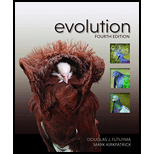
Concept explainers
To explain: In what way the occurrence of another
Introduction: Species are categorized separately on the basis of natural selection that determines the adaptability rate of an organism for the purpose of evolution. The process of coevolution is defined as the reciprocal
Explanation of Solution
The interaction of a parasite with its host can serve the purpose of daily activities. It can be the nutrition based (resource), for the sake of acquiring better shelter and
There is a concept of “diffuse coevolution” which lies under the category of the term “coevolution”. The possibility of exact two species is not the only case in coevolution, the interaction of several species to the group of some another species are considered under “diffuse coevolution”. The occurrence of another parasite influences the previous present host and parasite interactions by being the competitor in their way. The resources will be the limiting factor after the interaction of another parasite species.
For example in the case of prey interaction with a number of predators, the prey species evolved and became better defendant against the predators and acquire certain characteristics that will help them to win the race of life before the predator captures them.
Want to see more full solutions like this?
- If a parasite’s life cycle involves multiple hosts, what might control the population dynamics of the parasite? Briefly discuss. What is mutualism? Look up some examples of relationships that have been identified as mutualisms and examine them critically. Are they in fact mutualistic?arrow_forwardWhy is cannibalism aninharmonious intraspecificecological interaction?arrow_forwardHow does cooperation differ from mutualism? What might be some of the evolutionary implications of both types of symbioses?arrow_forward
- What is the interaction exhibited by the organisms named termite and protozoa? a.)mutualism b.)commensalism c.)predation d.)parasitism e.)competitionarrow_forwardAre there examples of mutualism or parasitism within these species? Explain and classify them into categories of mutualism, parasitism, and none.arrow_forwardWhat is the interaction exhibited by the organisms named ascaris worm and human? a.)mutualism b.)commensalism c.)predation d.)parasitism e.)competitionarrow_forward
- This graphs shows the regular cycling resulting from the interaction between of hosts and parasites. Host At equilibrium, what will happen to the parasite biomass if the host biomass increases? It will stay the same We need more information to answer this question It will increase It will decline Parasitearrow_forwarddetermine what type of interaction the example is describing 1. Pilotfish remove and eat parasites found on a shark's skin. 2. A Brown-headed cowbird lays her eggs in the nest of a Kirtland's warbler who then raises the young cowbirds as if they were her own. 3.The fungus Ophiocordyceps unilateralis infects ants and alters the ant’s behavior. The infected ant leaves its colony and attaches itself to the underside of a leaf and remains there until the fungus’ life cycle is completed. At this point, a fruiting body emerges from the ant’s head, killing the ant, and the fungal spores are released into the environment. 4. A scorpion stings and subdues its grasshopper prey, then eats the grasshopper. 5. Two male black bears fight for mating territory. predation herbivory mutualism competition parasitismarrow_forwardWhat kind of parasite/pathogen is most likely to evolve to host shift?arrow_forward
 Concepts of BiologyBiologyISBN:9781938168116Author:Samantha Fowler, Rebecca Roush, James WisePublisher:OpenStax College
Concepts of BiologyBiologyISBN:9781938168116Author:Samantha Fowler, Rebecca Roush, James WisePublisher:OpenStax College


